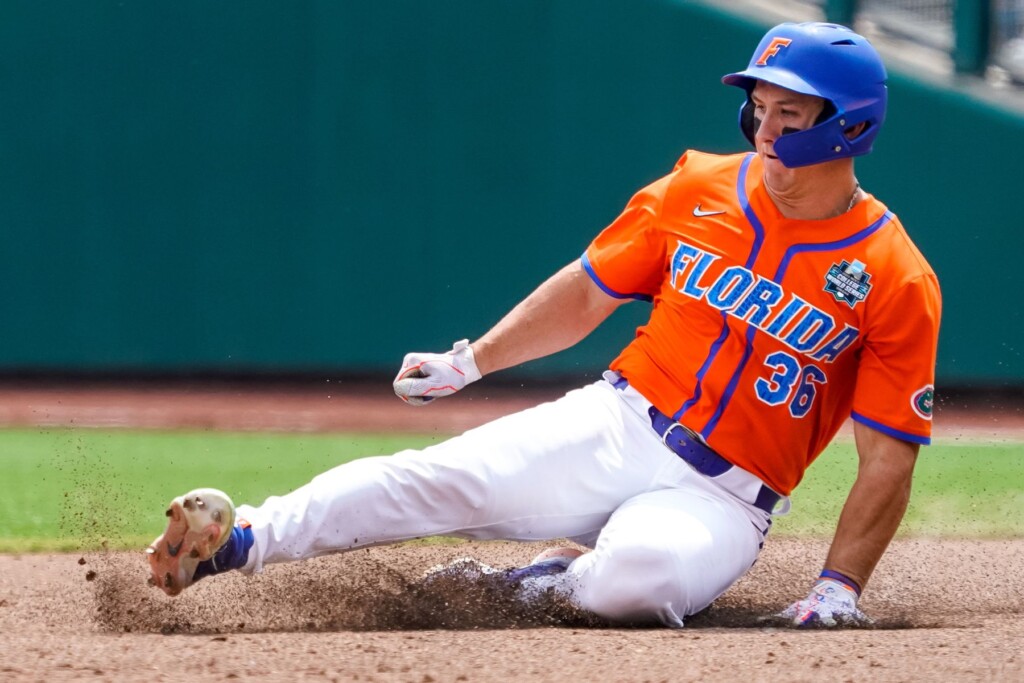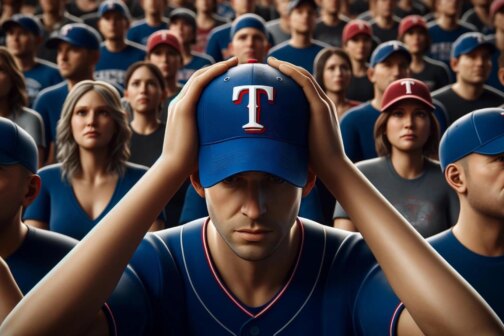The heart of the Rangers’ unexpected, division-leading success is their offense, and the heart of that offense beats in the infield. I could prove that point by listing those players’ résumés, or I could just gesture at the Rangers caps you’ll see at second base (Marcus Semien), third base (Josh Jung), shortstop (Corey Seager), and behind the plate (Jonah Heim) when the American League takes the field in Tuesday night’s All-Star Game. Because, wonky as fan voting can be, baseball has it right: this is the best infield in the game—the fifth member, first baseman Nathaniel Lowe, isn’t too shabby in his own right—and it’s the biggest reason to remain optimistic about Texas’ chances of winning the two-horse race that is the AL West this season.
That All-Star quartet’s production isn’t going anywhere in the short term. The same likely holds true in the intermediate. Semien’s likely decline, as he enters his mid-30s, should be more than offset by the 25-year-old Jung marching into his prime, Heim’s value enduring as a glove-first catcher who also hits well above the average MLB backstop, and Seager’s skill set as a hitter being tailor-made to age gracefully even if his glove forces him off shortstop.
But if the Rangers are to rival Houston’s longevity atop the division, it will be because of a trend that got cemented in Sunday night’s MLB Draft. The future of Texas’ lineup now runs through its outfield, the position group that less than a year ago fielded only one starting-caliber player.
More than anyone, that now means Wyatt Langford, the University of Florida product whom Texas nabbed fourth overall. Know this: even in a historically loaded draft—The Athletic’s Keith Law posited that all five of the top players selected would vie for No. 1 in a normal year—it was stunning to see Langford fall out of the top three. This is the best hitter Texas has drafted since Mark Teixeira 22 years ago, with contact (he hit .373 in the loaded SEC as a junior), pop (he’s the only hitter to crush three 400-foot home runs in the College World Series), patience (he walked in 18.4 percent of his at-bats while striking out in 14.5 percent), legs (he’s widely regarded as a 70 runner on the traditional 20-to-80 scouting scale), and, um, testicular fortitude. Like Teixeira, about the only knock in his profile upon signing is a glove that might someday tick down a notch on the defensive spectrum, from center field over to left. Also like Teixeira, Langford’s bat is so impressive that it won’t matter.
ESPN’s Kiley McDaniel ranked Langford as the top player on his draft board. Even more significantly, Langford will immediately check in as his ninth overall prospect in baseball once he signs, making him the first player to crack McDaniel’s top 10 out of the draft since Baltimore’s franchise catcher Adley Rutschman went first overall in 2019. Langford, then, is the sort of special player who validates this premise all on his own. He’ll be the future of Texas’ outfield and lineup because he’s part of baseball’s future, too.
But the shift was in motion well before Langford. Longtime infielder Ezequiel Duran may wind up back on the dirt someday, but for now the 24-year-old is a left fielder, a rerouting that occurred only because his hare-quick bat speed forced Texas to find a home for him. Leody Taveras, also 24, teetered on the brink of irrelevance to start the season, then bloomed into the two-way standout he’s been earmarked to become for half a decade. Adolis Garcia’s game is now as undeniable as his cult of personality, the byproduct of him becoming the rare swing-happy masher who reins himself as a thirtysomething. His walk rate has climbed for the third season in a row while his once-prodigious strikeout rate, the flaw that drove him out of minor-league baseball, has kept dropping. A year ago, his process was confounding. Now it’s the stuff that great cleanup hitters are made of—and that can endure, too.
Nipping at their heels is Evan Carter, the 20-year-old leadoff man of the future who reigned as Texas’ best prospect until 16ish hours ago. This is the New York Mets’ Brandon Nimmo reincarnated, a left-handed hitting plate discipline savant who will touch home plate 100 times per season atop a lineup like Texas’, and can stick in center field, too. Aaron Zavala, who turned 23 last month, keeps impressing the club with his bat, while 24-year-old Dustin Harris keeps ascending as one of the scouting department’s best finds in years.
Sheer numbers dictate not all of them will be here when the era of the $500 million middle infield begins to wane. But when it does, it will be Langford and Carter who offset it, to say nothing of the step forward Duran could take with two smidgens more restraint at the plate, or if Taveras can unlock another measure of power, or if Zavala and Harris’ gloves close the gap to their bats. This is where the upside lives in the organization.
A season ago, outfield was the place where the Rangers’ problems began in the field. Now this is the group best equipped to solve them. And not only because a future superstar just walked into Texas’ midst.
Author






